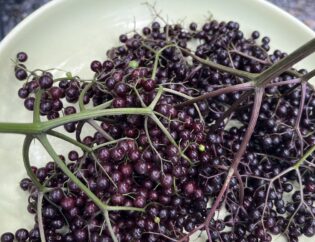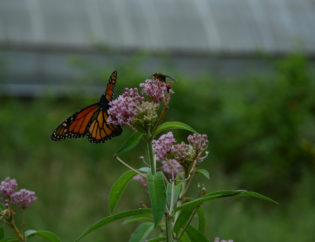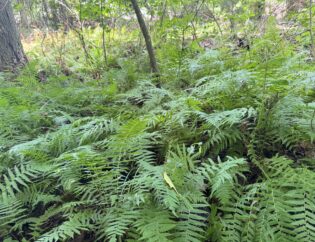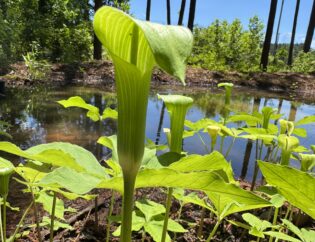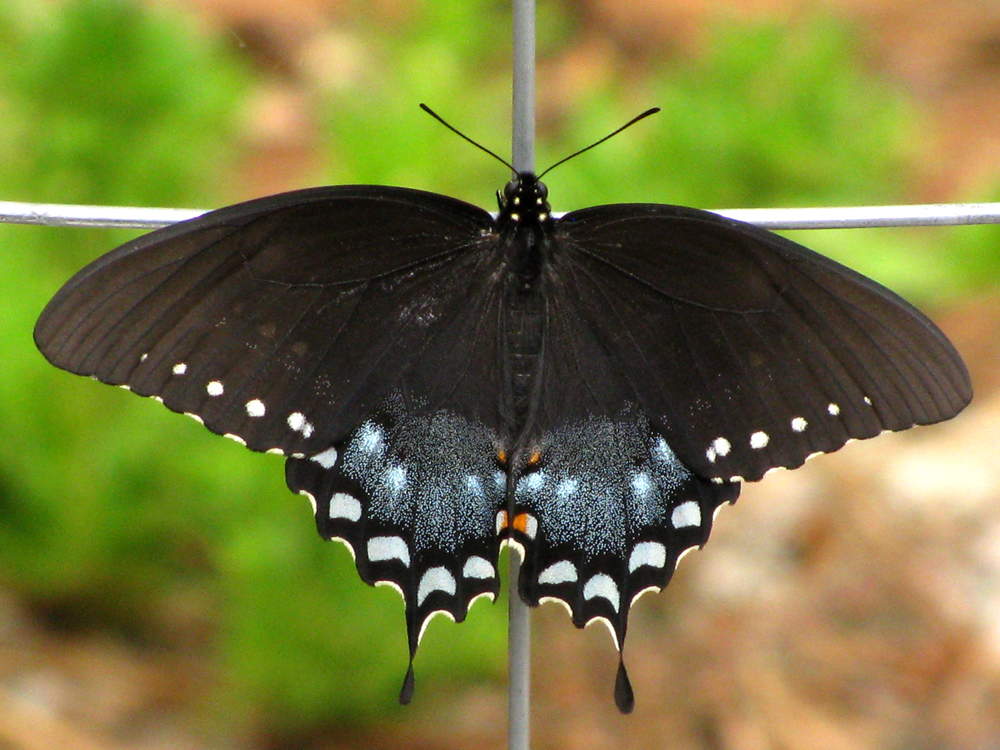
One of the most rewarding aspects of planting a pollinator/wildlife garden is watching the life cycle of caterpillars and the resulting butterflies play out in your backyard. I was lucky enough to bear witness to such a process involving the Spicebush Swallowtail over the past 6-8 months, and, fortunately for you, I had my camera handy for most of it!
A quick refresher lesson in butterfly life cycles: Adult butterflies feed on the nectar of a variety of plants to gain the energy to search for a mate. Once they mate the females lay eggs on a suitable host plant. This relationship is one of the most fascinating parts of the process. Some butterflies will lay eggs on a variety of plants, usually limited to a specific plant family, such as Rosaceae (Rose Family). This means that the caterpillars that hatch from the eggs could feed on the leaf of a rose, an apple tree, a hawthorn, a plum tree, or a strawberry plant and be perfectly happy and healthy. Other butterflies will only lay eggs on specific plants such as the famous Monarch butterfly (Danaus plexippus), which lays eggs on, and whose caterpillars eat only Milkweed plants (Asclepias spp.).

The female, after mating with a male, will seek out an appropriate host plant on which to lay her eggs. She uses her compound eyes to locate plants and then lands on a leaf and drums on it with her forelegs. Specialized chemical receptors in the forelegs can sense/taste/smell the leaf and its chemical exhalations and confirm or deny the host-worthiness of the plant. Spicebush Swallowtails lay eggs exclusively on plants in the Lauraceae family (Magnolia Order), which includes Spicebush (Lindera bezoin); Sassafras (Sassafras albidum); Sweet Bay (Magnolia virginiana); and Tulip Tree (Liriodendron tulipfera).
Once the eggs hatch the caterpillars emerge and begin to eat, and eat, and eat the leaves of the host plant until they are large enough to shed a skin. They do this four or five times, and each new skin is called an 'instar.' Once they have grown sufficiently and stored enough leaf energy to pupate they shed one last skin and what emerges is a chrysalis in which the transformation to a butterfly is completed. Before the last skin shed the caterpillar anchors itself to a leaf, twig, brick, pot, or other stable surface with silk wires, and the hardened chrysalis hangs by these delicate wires for the duration of the transformation. The adult butterfly emerges to feed on the nectar of flowers and find a mate and the whole process starts over.
So, let's rewind back to September of last year. I'm in the nursery and I see some leaf damage to the Spicebushes (Lindera bezoin) and start hunting for the culprit.

This is one of the earlier stages of the caterpillar, in which it is camouflaged to look like bird droppings. The Spicebush Swallowtail's entire life cycle is marked by camouflage and visual deception.

This little guy spends the days in a rolled up leaf to hide from birds and other predators and comes out at night to feed on the leaves of the plant. The leaf rolling mechanism is one of those amazing feats of natural engineering that's also so simple that it leaves you speechless.

The caterpillar attaches threads of silk to the leaf on either side of the leaf mid-vein and as the silk dries it pulls the leaf around the caterpillar. When I let go of the leaf edges it instantly wrapped back up.
That was the initial contact. in the coming weeks I noticed several more caterpillars, and then I saw one that had made it to the next stage, or instar, in which it's meant to resemble a snake.

The body swells at the end and the "eyes" (which are just skin coloration, the actual eyes are further down the head) become more prominent.

It does look like a snake's head at least. Still hiding in that leaf.
I didn't get a picture of the next phase, in which the caterpillar gets even bigger and turns a yellowish-orange color before anchoring itself to something and shedding its final skin to emerge as a chrysalis. I did find several of those a few weeks later.

Here is one right on the Spicebush. I also found them on neighboring plants, and some were even in between the pots that hold the plants. Look at the industrious use of the two silk lines and the anchored base to hold it upright and steady.

It was pretty cool to see just how many little future butterflies our population of Spicebushes were supporting. We had about 60 one year old plants in the nursery, which would probably have the equivalent number of leaves as two or three fully grown plants. I didn't get to see any of these hatch, but I did find a few empty ones later.
So, the winter came, and the plants lost their remaining leaves, and the food source was gone. About a month ago the Spicebush broke dormancy and began putting out new leaves. One month is about the time required for a caterpillar to go from egg to butterfly. Just the other day I was in the greenhouse when I spotted a young, probably newly hatched, butterfly on some phlox.

It stayed there until I startled it about 2 hours later, and it moved toward the wall where I was able to get a great shot of it flexing.
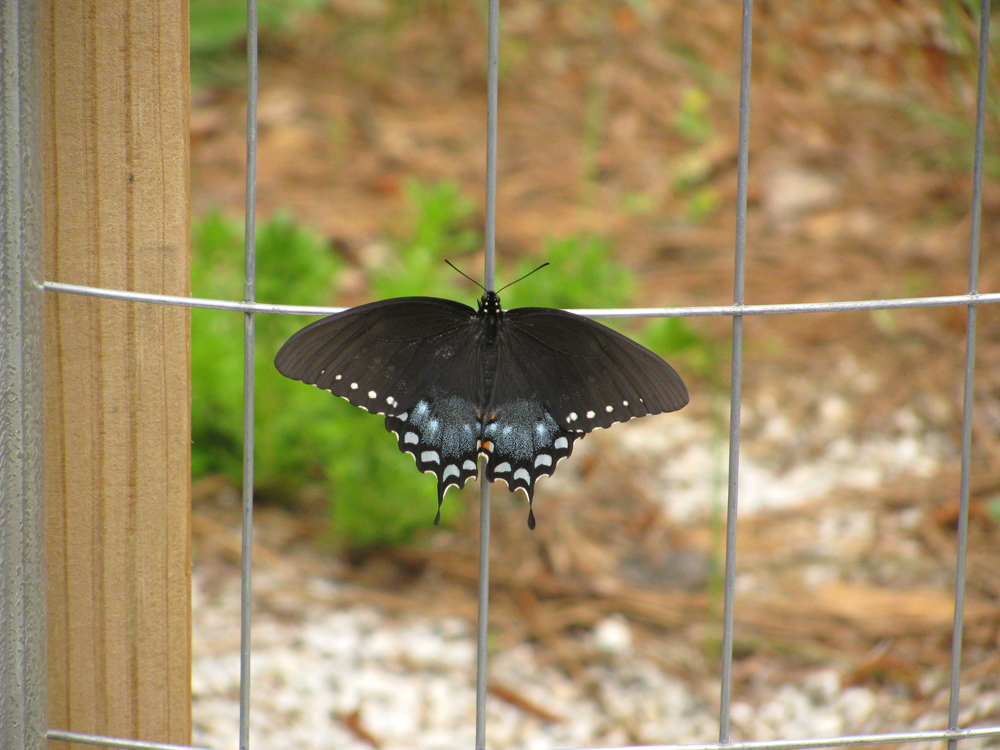
I still thought it was a Pipevine Swallowtail (Battus philenor) but that's partially because that's what it wants you to think. Especially if you are a bird. Pipevine swallowtails feed on Aristilochia species and, much like the Monarchs and milkweed, that makes them taste bad/toxic as caterpillars and even as adults. Birds learn not to eat the foul tasting butterflies that are also black with white, orange and blue markings, and these guys get a free pass by association.

This picture is why I was able to definitively ID it as a Spicebush Swallowtail. It's still lacking the white spots on the very outer tips of its wings, which I thought suggested it was still very young. That and the larger than normal abdomen along with the time of year.
Here's a few of the links I used to learn all this stuff:
- BAMONA entry for: Spicebush Swallowtail; Pipevine Swallowtail
- University of Florida/IFAS Profile for Spicebush Swallowtail with lots of great pics
- Great intro meant for kids from U Mich. I learned something.
- Finally, the Wikipedia entry: Papilio troilus. I know, terrible form, but follow the citations if you want good sources of info.
